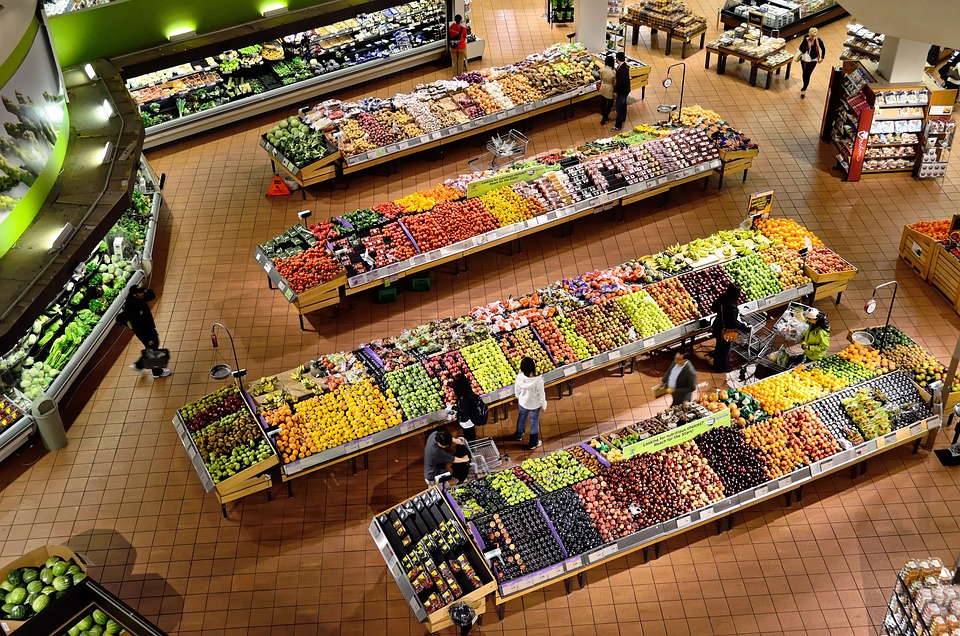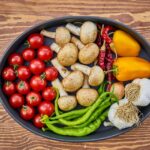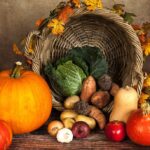One of the biggest decisions consumers find themselves making at the grocery store is whether or not to buy organic products. While the term “organic” has been hyped up in recent years, it is not always clear to consumers what benefits they get from buying food that has this label. Additionally, organic items are often more costly than their non-organic counterparts.
When deciding whether or not to shop organic, it is important to know exactly what organic means, how you and your family might benefit, and how to shop for organic in a way that makes sense. The following text provides a brief overview of what it means to shop organic. It covers some of the main points to help you make an informed decision.
What Does Organic Mean?
When foods are labeled organic, it means that they were made or grown using organic methods. For example, if you buy organic meat, poultry, eggs or dairy products, this means that they were produced without using antibiotics or growth hormones.
If you are buying organic fruits and vegetables, this means that they were grown without the use of pesticides, synthetic fertilizers, sewage sludge, irradiation, or genetic engineering. To receive the USDA organic label, the producer or grower must be inspected by a government-approved certifier to ensure that these standards are met.
The label of “organic food” does not necessarily mean that the food is healthier. The director of dietetics at the University of Georgia, Emma Laing, explaned that when a food is advertised as organic, this tells Consumers more about how the food was produced, rather than how healthy it is.
Wording on food packaging can be confusing, but Dr. Laing points out that there are three types of organic claims, each with a different meaning. There are three types of products: those that are 100% organic, those that are organic, and those that are made with organic ingredients.
Types of Organic Labels
- 100% Organic : Products that are completely organic or made from solely organic ingredients qualify for this claim and the USDA organic seal.
- Organic : Products in which at least 95% of ingredients are organic qualify for this claim and the USDA organic seal. In this category, the product and ingredients must be certified organic, except where specified on the National List of Allowed and Prohibited Substances.
- Made with Organic Ingredients : At least 70% of ingredients in these products are certified organic. The USDA organic seal cannot be used on these foods, but the phrase “made with organic ingredients” may appear on its packaging.
Understanding the Differences Between Organic and Locally Grown Food
Organic food is food that has been grown without the use of synthetic fertilizers or pesticides. Organic food is grown using natural methods, such as crop rotation, green manure, and composting. A trend that you might not know about is food that is grown locally. What is the difference between locally grown and organically grown products? There are important differences between these products, as each has its own unique context and benefits. You are probably familiar with farmers’ markets, and you might have seen the organic food section at your local grocery store.
Although one might think that all the food for sale at a farmers’ market is organic, this is not necessarily the case. These foods are better categorized as locally grown. The food items found in grocery stores are typically approved by the USDA as being organic. The produce at the farmer’s market is likely not grown locally, but comes from a certified organic farm that is located farther away.
Organic Foods and Products
” Organic products must be produced without the use of synthetic pesticides, artificial fertilizers, manure, growth hormones, antibiotics, or ionizing radiation. Organic products are those that are produced without the use of synthetic pesticides, artificial fertilizers, manure, growth hormones, antibiotics, or ionizing radiation, according to the USDA. The above methods can be classified into three main categories: cultural, biological, and mechanical. Each of these methods has its own unique way of promoting ecological balance and biodiversity. The following cannot be used: synthetic fertilizers, sewage sludge, irradiation, and genetic engineering. The term “organic farming” refers to the way farmers grow and process goods, such as produce and animal products, in a way that meets standardized regulations. The produce is grown without the use of artificial chemicals, hormones, antibiotics, or GMOs.
The standards for organic foods are set by the USDA. They also work to make sure that these standards are being followed. In order to sell, label, or represent a product as organic, operations must follow the specifications set forth by the USDA. If you want to make sure a product is organic, look for the USDA organic seal to ensure it is certified organic. The specific standards that must be met in order to be certified and labeled organic can be found on the Organic | Agricultural Marketing Service website.
The organic market has seen significant growth in recent years. Fruits and vegetables make up the majority of organic sales in the United States. People may choose to purchase organic foods for a variety of reasons, which may include caring about the environmental impact of conventional farming, being interested in general health and well-being, animal welfare, and thinking that organic foods are tastier and fresher than conventional non-organic alternatives. One significant factor is that consumers believe organic food is healthier or has a higher nutritional value.
An advantage of organic foods and agriculture is that it is environmentally friendly. Organic farming is not as efficient as traditional farming when it comes to land usage, which can lead to environmental problems such as deforestation, loss of biodiversity, and release of carbon into the atmosphere. Organic farming practices can help to reduce the amount of energy used per unit of land, as well as the emissions of greenhouse gases. It may help improve water quality by reducing nutrient leaching and pesticide pollution into bodies of water.
Disadvantages of Organic Foods
There are some disadvantages to exclusively choosing or recommending organic foods. The main downside to organic foods is that they can cost more than food that is grown using traditional methods. The data suggests that organic foods are, on average, 50% more expensive than conventional foods, with some costing even double. 3,7 While organic foods may be more expensive, they can be difficult to find in some areas, particularly for those who live in lower income communities or face scarcity issues. Organic foods tend to have a shorter shelf-life. The high price of these products can make them difficult to justify purchasing.
Organic products are also more sensitive to environmental changes, that if left unmanaged, could lead to significant losses. Due to the emphasis on natural growing methods and stricter regulations, farmers must put in more work to produce organic food. Organic foods require more physical labor to bring to market because there are fewer automated processes involved. Additionally, natural fertilizers can need to be manually spread and weeded to reduce their environmental effect. Organic foods can be more expensive because they require a lot of time and physical labor. Although organic food can be more expensive, it is important to be aware of what you are buying and what benefits it might have. Although organic food can be more expensive, it is worth it because you are buying food that is healthier for you. All the ingredients in a product can be organic. o% of ingredients must be organic for a product to be able to say “made with organic ingredients” on the front of the packaging.
There are several benefits to buying organic or locally grown food, including reducing your environmental impact, supporting local farmers, and improving your health. Organic food is thought to be healthier because it has more vitamins and minerals. It is also believed to be more sustainable because it is better for the environment. Buying local can help make communities more sustainable, and support local economies. If you want to buy fresher products and support local businesses, these products are a good option. Although they are cost effective and available, some individuals may not be able to afford or access them. It has been documented that there are some benefits to organic and local foods, but the compositional differences are not great enough to say for certain which is better for you. Additionally, if you are unable to afford organic foods, it is still possible to maintain a healthy diet by consuming conventionally grown foods.
Benefits of Shopping Organic
If you decide that shopping organic is right for your family, there are several benefits that you will enjoy. You will need to consider your family’s goals and budget when making this decision, as it is a highly personal one. Here are some of the more notable advantages.
May Offer Less Exposure to Harmful Chemicals
One of the main advantages of eating organic food is that it lowers your chances of ingesting harmful chemicals that are used in farming pesticides, herbicides, and fungicides. These chemicals have been linked to cancer.
“Shopping organic means less consumption of chemical pesticides that don’t belong in the body,” explains Jenna Volpe , RDN, LD, CLT, a functional dietitian. “Generally speaking, the less pesticides we consume, the less burden this places on our liver, which can make a big difference on overall quality of life over time.”
May Have Higher Nutritional Content
According to one older study, organic foods generally have higher levels of certain vitamins and minerals when compared to conventional foods. According to researchers, organic foods offer more vitamin C, iron, magnesium, and phosphorus than non-organic foods.
There is little variation in the macro nutritional value of organic and conventional food products, but some researchers have noted other compositional differences. Organic crops contain higher concentrations of antioxidants, particularly polyphenols. This results in improved fatty acid profiles in organic meats, as well as increased levels of omega-3 fatty acids in organic dairy products.
May Be Better for the Environment
Emily Tills, RDN, a virtual nutrition coach in New York, says that organic products can be better for the environment. Pesticides used in organic farming are more natural and cause less erosion, resulting in better nutrient levels in the soil.
An older study found that, on average, organic farmland had eight more inches of topsoil than non-organic farm land. A different study suggests that organic farming might be a better choice than other types of farming because it decreases pollution, preserves water, decreases soil erosion, raises soil fertility, and requires less energy.
Smart Shopping Tips
We have created a few guidelines to aid your shopping experience if you are looking to purchase organic items, but are unsure of where to begin. If you’re looking for organic food at the grocery store, these expert-approved tips can help you make smart choices.
Get Familiar With Nutrition Labels
The meaning of organic labels can vary, so it is important to read the product packaging to understand what you are getting. An example of this would be if a food is labeled 100% organic, this would mean that the food itself only contains organic ingredients.
The code on organic produce starts with a nine, while conventionally grown produce has a four-digit code, says Erin Palinski-Wade, a dietitian from New Jersey.
Prioritize Highly Porous Produce
Some fruits and vegetables may have higher levels of harmful chemicals than others. The Environmental Working Group (EWG) releases a Clean Fifteen and a Dirty Dozen guide each year in order to inform the public about which fruits and vegetables contain the most and least amount of pesticide residue.
The Clean Fifteen list comprises of non-organic fruits and vegetables that have minimal pesticide residue, as opposed to the Dirty Dozen list which has the non-organic fruits and vegetables with the most pesticide residue. The following lists can help guide consumers on when to buy organic and when they can instead opt for conventional foods without exposing themselves to high pesticide levels.
Fruits and vegetables such as strawberries, spinach, kale, apples and grapes should be bought organic if possible, according to the EWG lists. While sweet corn, asparagus, mushrooms, and mangoes may be okay to purchase conventionally, other items may not be.
Shop in Season
This will help you save money while still getting the benefits of organic produce. This is because fruits and vegetables that are in season are more readily available, and thus their price is lower.
For example, strawberries are usually at their best during the summer months, both in terms of taste and value for money. Other vegetables that are in season during the fall are carrots, sweet potatoes, and pumpkins. In the spring, broccoli, peas, and lettuce are also in season.



